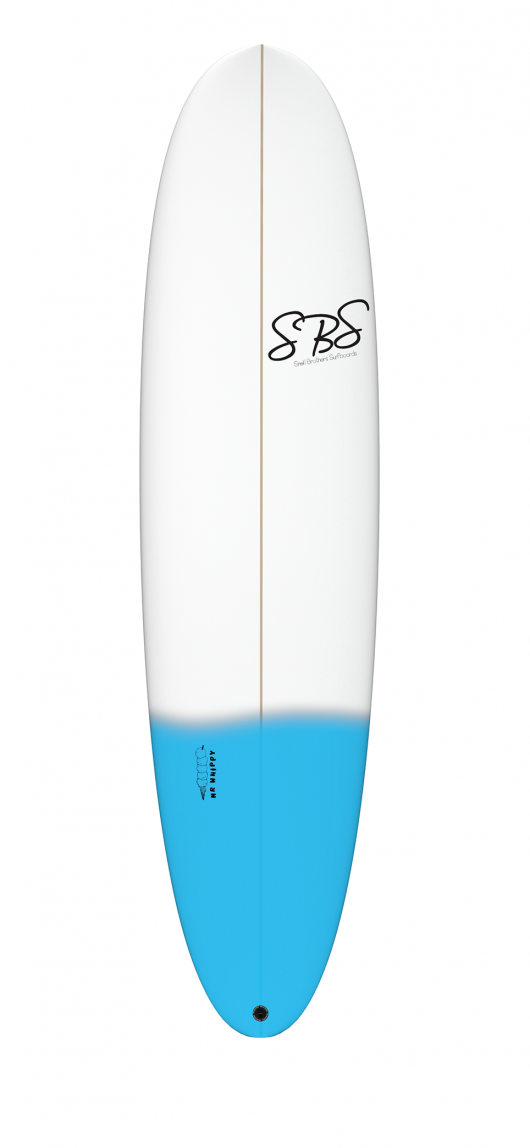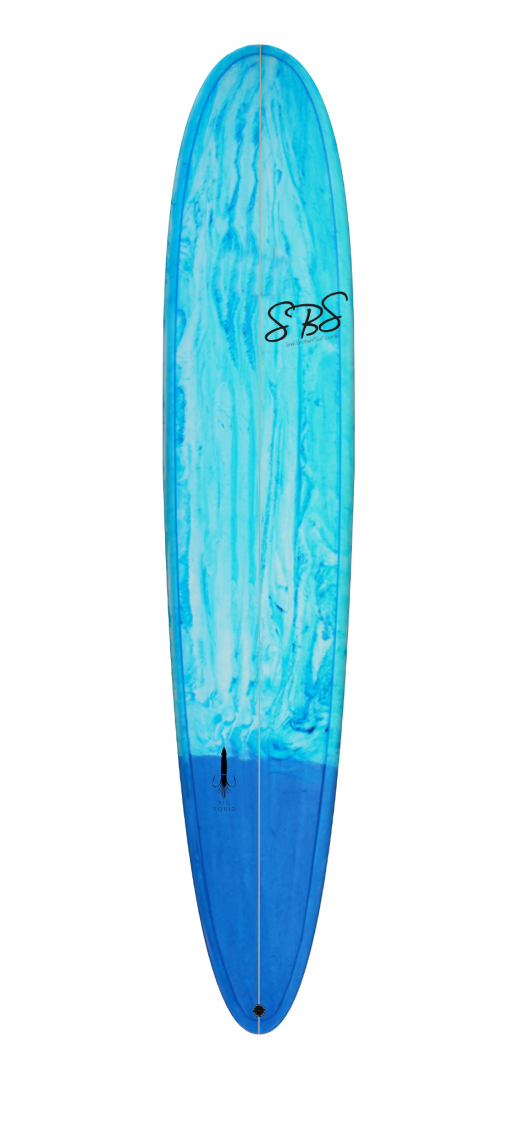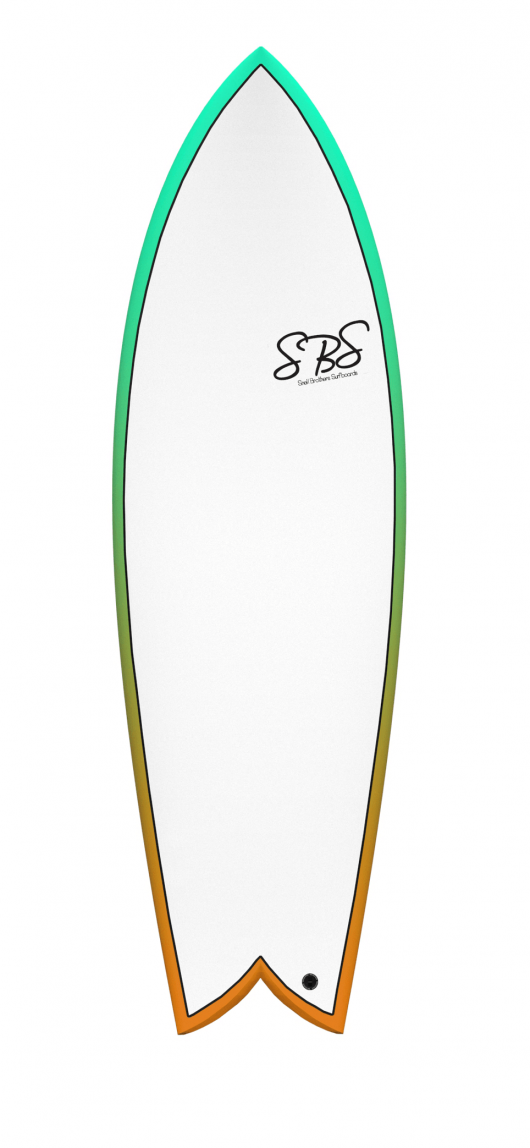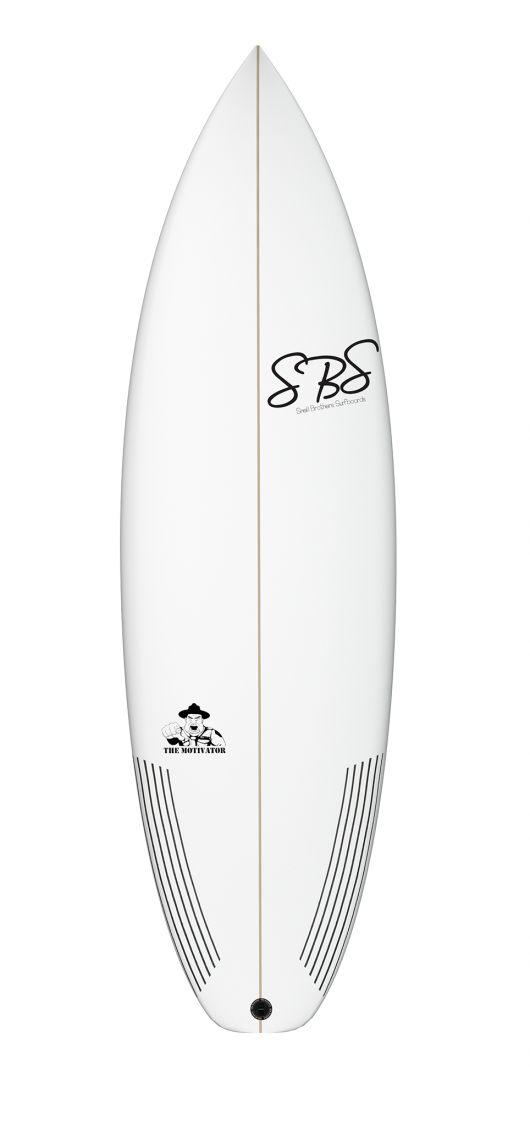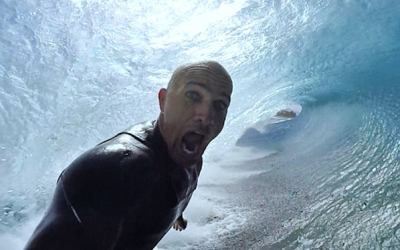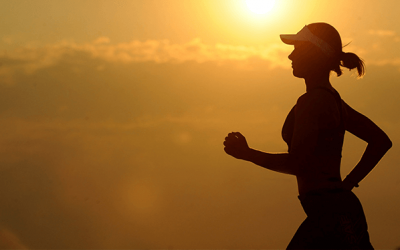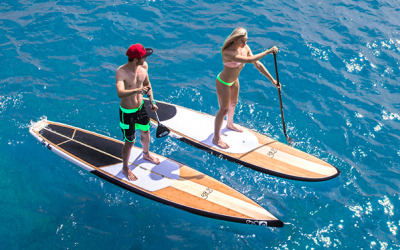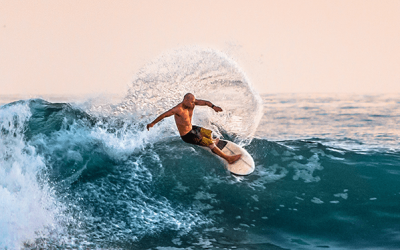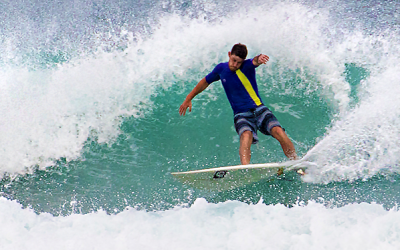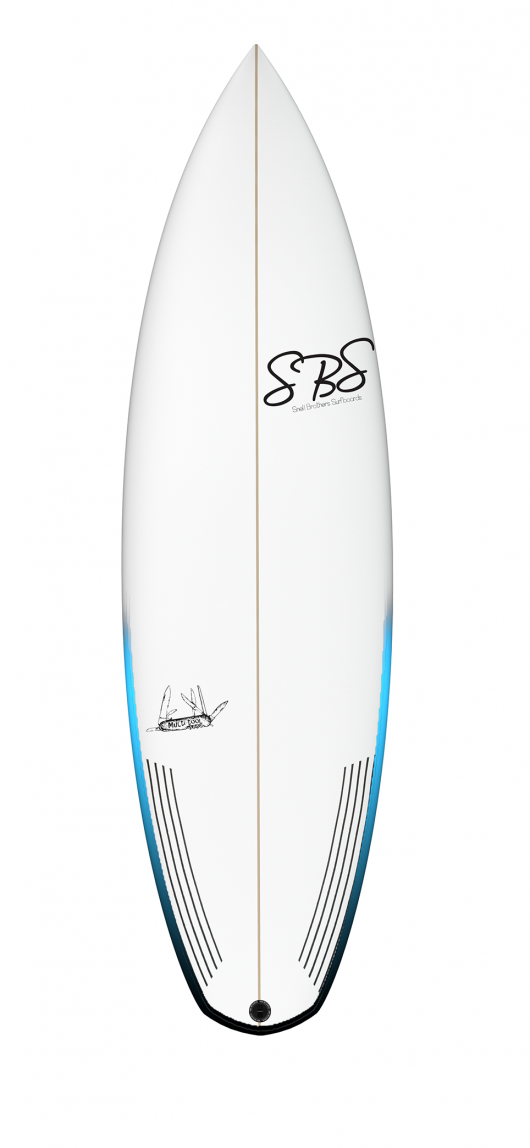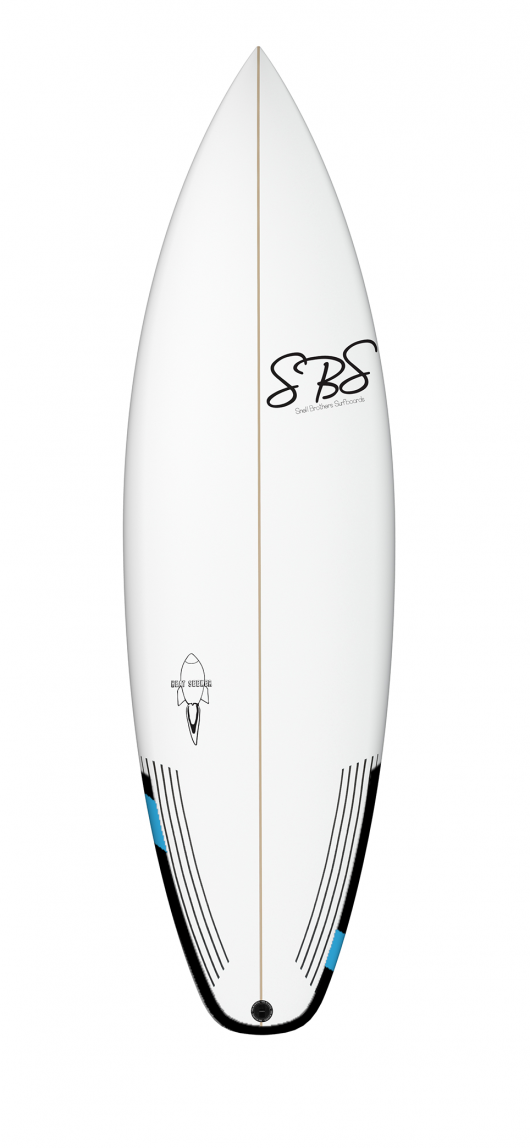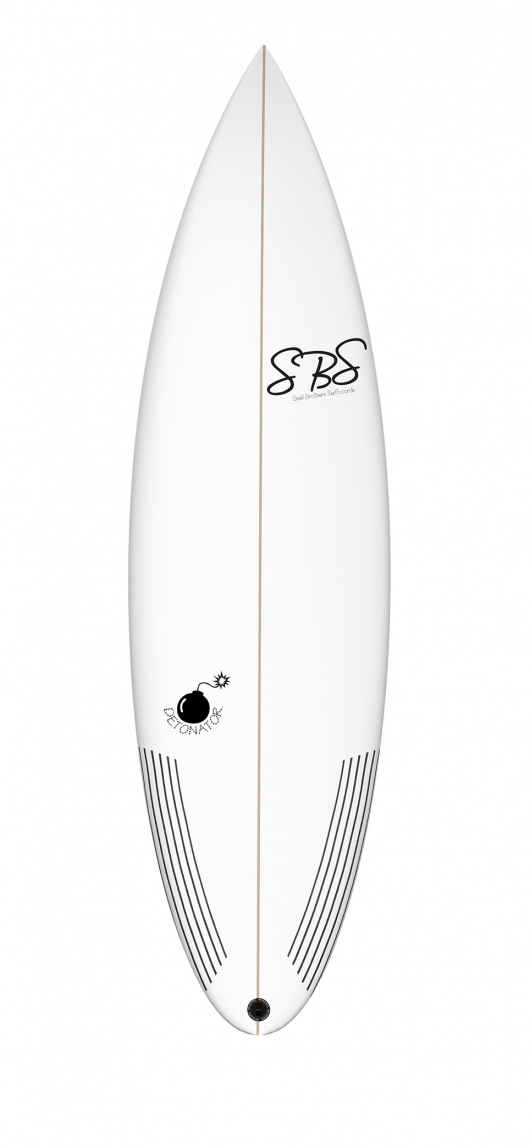how to pop up on a surfboard
Beginners guide to pop up & How to pop up
Learning the pop up is one of the most basic and vital movements that you will perform every time you go surfing making sure that your technique is good is critical to the start of every wave but also your progression. Below are a few key points for learning the pop-up
You can practice the pop up pretty much anywhere it’s a good idea to practice on the floor as a beginner to help your body remember the techniques as well as condition your muscles by building up some arm strength.
Before you start you will need to know a few of the basic parts of the surfboard
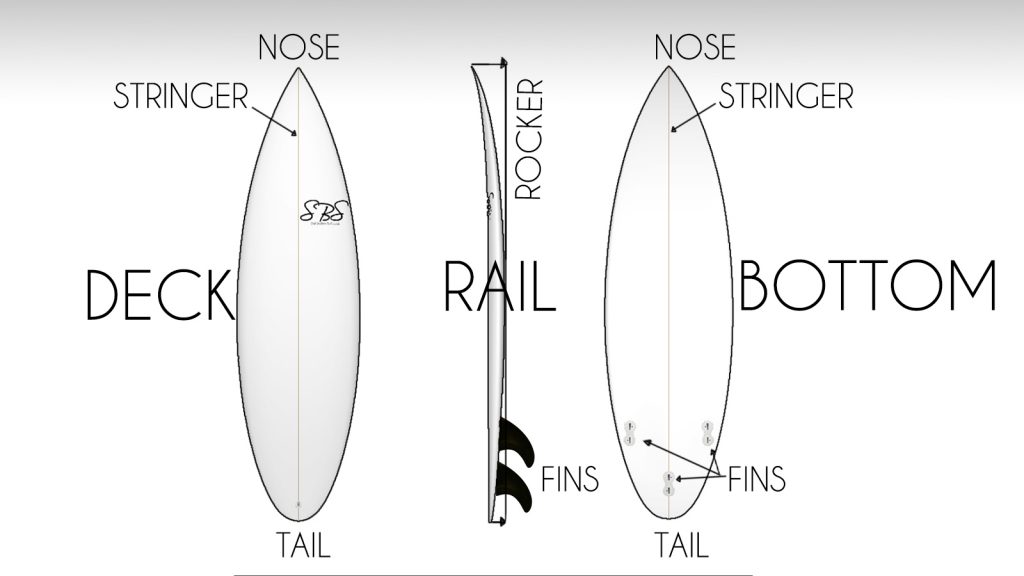
Stance
Before you start to stand on the board you will need to figure out what stance your prefer. The best way to stand on a board is sideward you will need to play around with what stance feel more comfortable. If your “Regular” stance you will have your right foot at the back closer to the tail, and the left at the front closer to the center of the board and if you’re “Goofy” it will be the opposite. Both these stance are the same it’s just down to your preference.
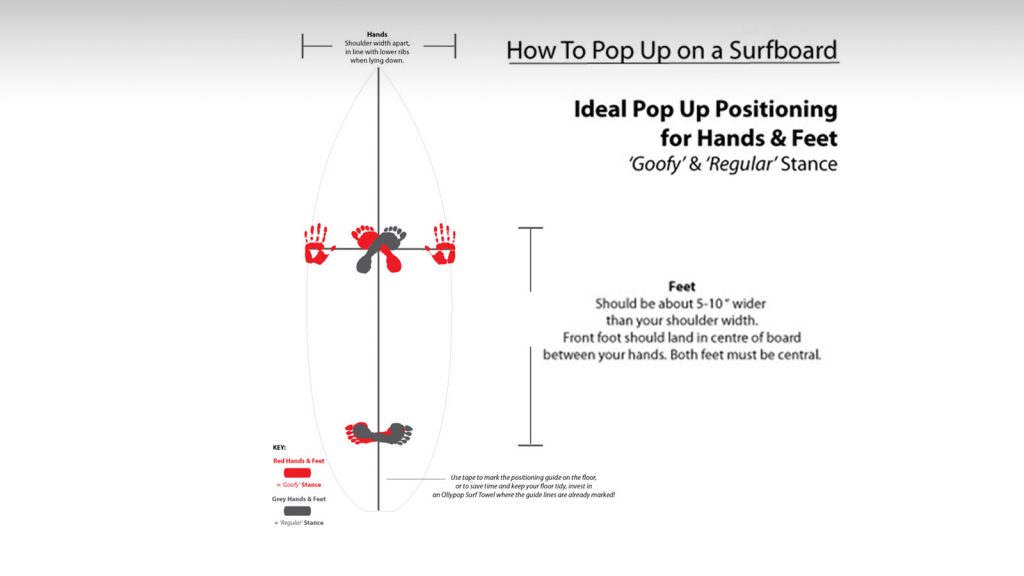
Positioning and Balance
The first thing to think about when laying on your board is positioning, making sure they your balanced on the board or in the “sweet spot” is critical to a well-performed pop up
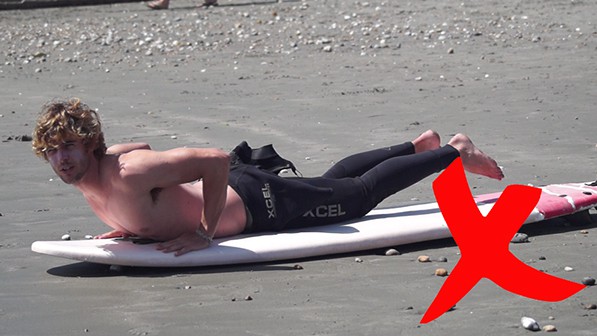
Tips for positioning
-
More weight on the front will increase planning speed and momentum when catching waves but also increase the chance of nose diving
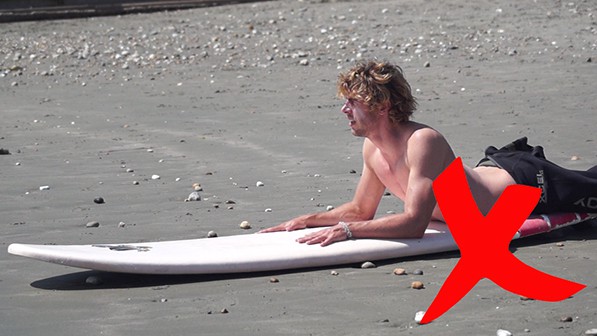
More weight on the back will give you more control and stability to maneuver a turn and also slow the board down. But too much weight on the tail may make it more difficult to catch waves and keep the board planning
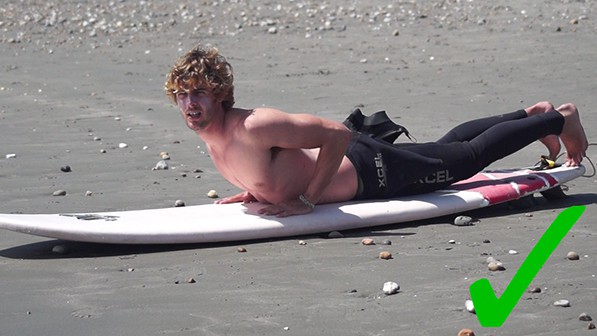
Balanced in the middle “sweet spot” this is the best of both words being able to paddle efficiently and maintain speed without sacrificing speed or manoeuvrability
The Best surfboards for beginners
Pop up techniques
The surfing pop-up is essentially an explosive push up. This is how you get to your feet on a surfboard! To make the pop-up easier, practice several pop ups on dry land every day. This will build up your arm strength and give you some muscle memory. When it comes time to do it on a surfboard you’ll have a much easier time.
Everyone’s surfing pop-up is slightly different, but for all intents and purposes the pop-up technique is basically the same for everyone. The pop-up should be a single fluid motion. Don’t worry if you don’t get it exactly right the first few times. It will come with practice. You’ll also need to build up some muscles.
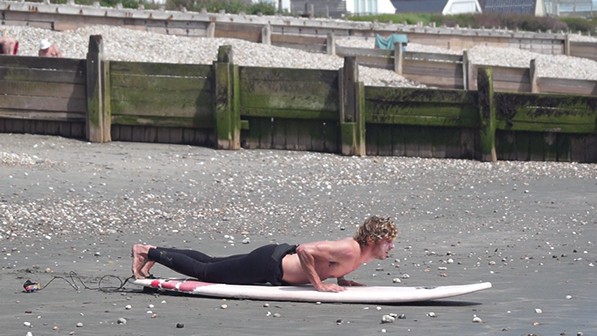
The key points of the pop up are?
-
Lie on your chest head facing the nose and feet just on the tail with your body straight
-
Place your hands flat on the board at the bottom of your ribcage (as if you were doing a press-up), board width apart Hands by your side, thumbs in line with lower ribs
-
Arch back; Push your chest off the board with your pelvis and upper thighs still in contact with the board.
-
Short board pop ups – don’t spring from the toes! You need to use your upper body strength to launch forwards. It’s a lot harder, but a necessity if you’re a short boarder or wants to increase your core upper body strength
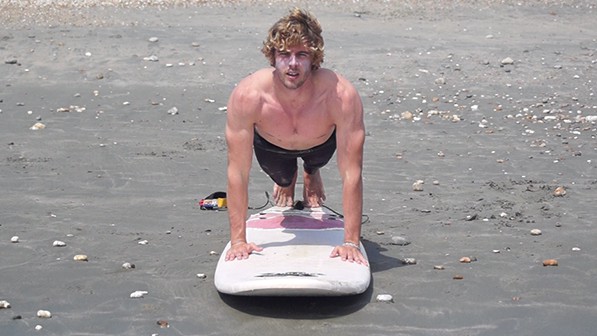
-
-
Without relying on your knees, bring your front foot forward under your body to approximately where your hands are. Your lower torso will twist. Both feet leave the board at the same time and both feet land back down at the same time.
-
Once you begin to land in the middle the surfboard, it will remain flat so you can release your hands from the rails and rise. Your back foot will naturally follow—your feet should be parallel to your board’s stringer.
-
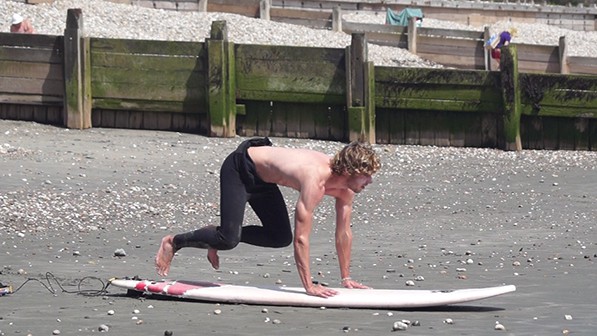
-
-
-
Get front foot between hands), back foot should land about a shoulder width from front foot
-
Twist your body from the hips moving up to a low bent knees position with your arms out helping balance and eyes looking forward. As you come up into the stance, continue looking where you’re going at your surfboard as you may need to start shifting your weight right away.
-
-
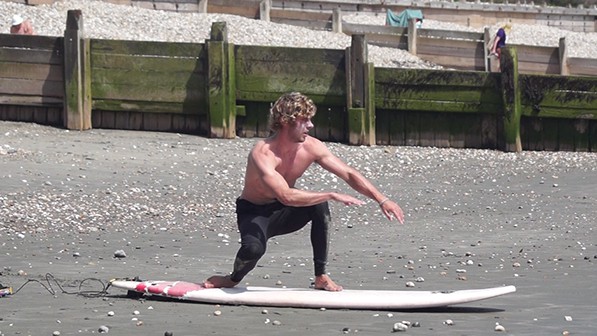
-
-
-
-
Lean on your back foot for control or to initiate a turn.
-
Lean on your front foot to go faster!
-
-
-
One Knee First

One Knee First
-
If you are having a little trouble getting to your feet with the pop up, then there is a short term solution to helping you get to the standing position. Instead of going straight up on to your feet, you can place the back foot first with is slightly less explosive.
-
Starting in the original pop up position push up with your arms
-

One Knee First
-
Slide the foot you want at the back of the board forward so your kneeling on one knee

One Knee First
-
-
In one motion bring you other knee forward and place it as close as you can in-between your hands
-
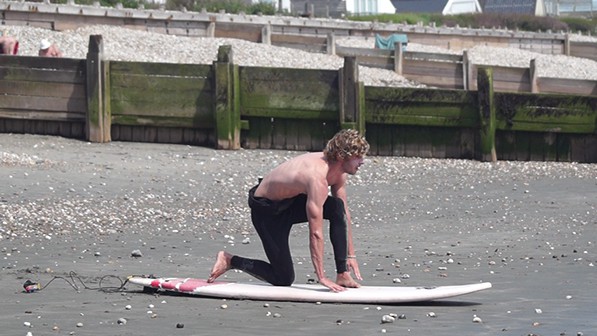
One Knee First
-
-
Now push up with your hand and twist allowing your feet to become parallel with the board
-
Back foot first pop up
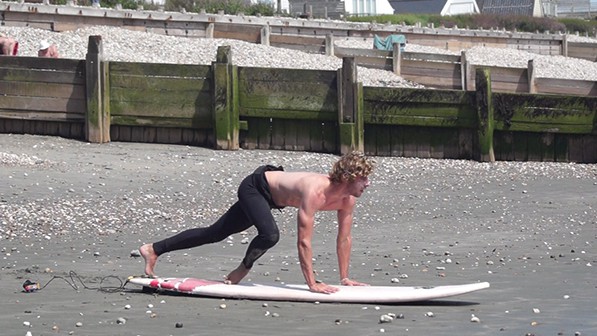
Back foot first pop up
-
This technique may be slightly easier for beginners and has easier stages to fallow but should only be used as a short term solution to standing up
-
Push up in to the prone position and bring your back foot forward about 14-18 inches this will open up the hips.
-
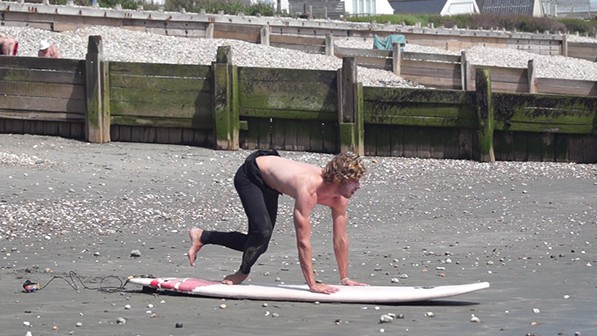
Back foot first pop up
-
Bring your other foot (front foot) forward underneath your chest as close to your hands as possible in the center of the board

Back foot first pop up
-
Keep looking forward and push of the deck with your hands whilst twisting your hips to become parallel with the rails
STANCE
Stance is key to the longevity of your ride and also the control a bad stance will mean your ride is over quickly were as a good stance will be able to maximize the time spend on a wave
TIPS FOR STANCE
As you come up into the stance, continue looking were you’re going at your surfboard as you may need to start shifting your weight right away.

TIPS FOR STANCE
-
As you come up into the stance, continue looking were you’re going at your surfboard as you may need to start shifting your weight right away.
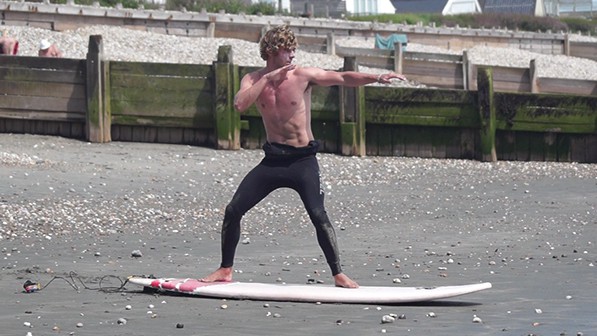
TIPS FOR STANCE
-
-
Stand sideways on the surfboard. With either the right feet near the back, which is called “regular foot”, or with the left foot towards the back, which is called “goofy foot”.
-
Upper body centered. It is critical to keep your hips centered over your feet
-
Legs shoulder width apart. Then you can use weight shifts by applying more weight to one foot or the other to keep the board flat. The flatter the board stays the farther you will go on the wave.
-
Arms out : helping you to balance and also used as a guide to help direct your board were to go
-
-
Looking forward: looking forward not only helps with balance and stability but it will be the key to turning and
-
Feet parallel in the center of the board. The wider apart you can spread them the more balanced you will be and more control and stability of the board you will have.
-
Lean on your back foot to slow down or for control or initiate a turn. Lean on your front foot to go faster!
Practice this technique in the shallows in the whitewater until you can come up and surf at least half of the time. Then you will be ready to paddle out in to some bigger waves.
Good luck
Kelly Slater – How to Carve 360 in Surfing …
Kelly Slater - How to Carve 360 in Surfing ... Kelly Slater - How to Carve 360 in Surfing ... Yes when Kelly speaks we listen carve game and Airs in surfing the 11-time world champ talks about these 2 as totally different styles of surfing and can affect your...
Best Warm Ups For Surfers
BEST WARM UPS FOR SURFERSBefore hitting the surf it’s essential to warm up! Warming up helps to prepare your body for the coming activity and the body’s systems to reach a steady state of energy production whilst also preparing the muscles for exercise and raising...
Top 10 BEST Foods for Surfers
Surf Nutrition : Top 10 BEST Foods for Surfers Every surfer knows the feeling sliding down the face of a wave just can’t be beaten. We all want to surf more for longer with more energy but there usually come a time where our energy level start to dip. Knowing...
Top 10 Reasons a Stand Up Paddleboard is better than a kayak
10 Reasons - Stand Up Paddleboard is better than a kayak 1) Perspective: On a kayak, you sit. On a stand-up board–you stand. From standing you can just see so much more. Wildlife in the water around you, waves coming in on the horizon—standing just gives you a...
How to do a Top & Bottom Turn in Surfing
How to do a Top & Bottom Turn in Surfing The bottom turns along with the top turn are probably the 2 most crucial and fundamental moves in surfing. They are used every time you catch a wave, and every time you perform a manoeuvre. Mastering the...
Improve Your Round house Cut back
Improve Your Roundhouse Cut back The roundhouse cut back is one of the most stylish and functional manoeuvres in a surfers arsenal. The roundhouse cutback is a move that is used by surfers of all skill levels. It allows great rail control whilst being functional by...

